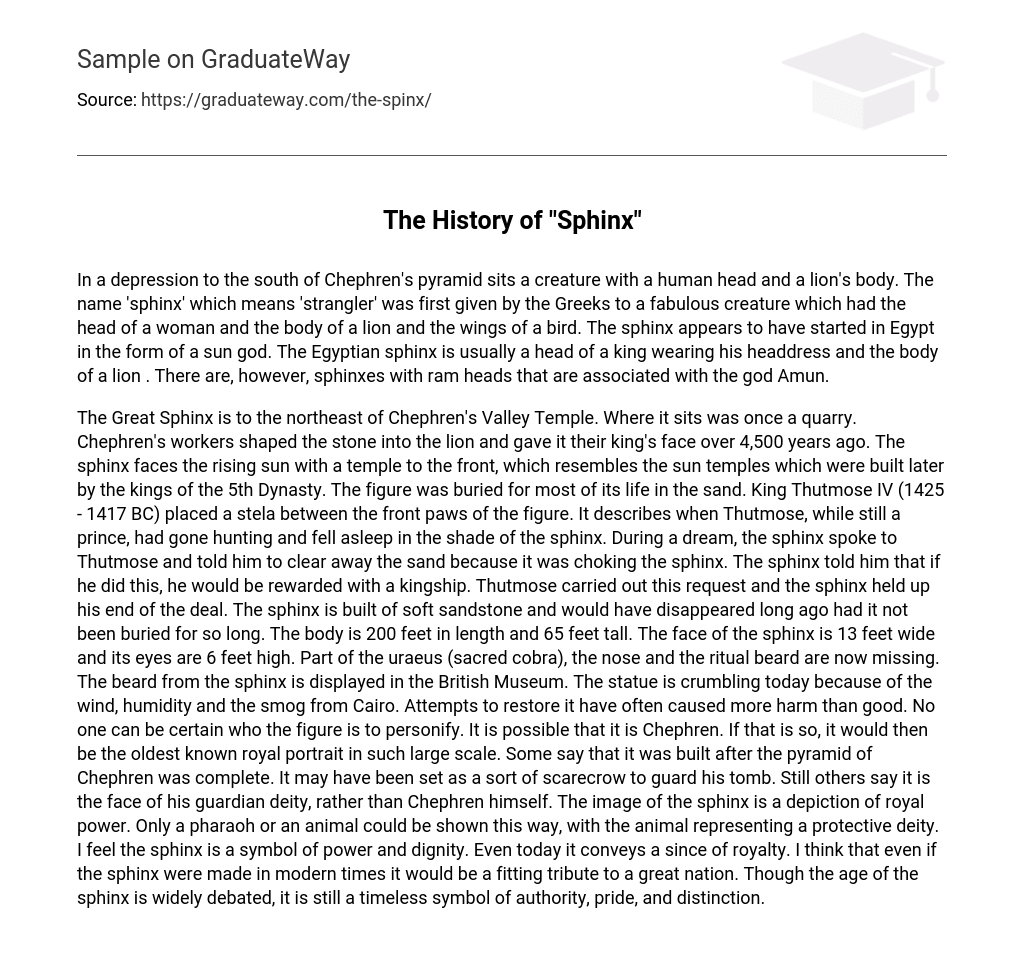The creature known as the ‘sphinx,’ residing in a depression south of Chephren’s pyramid, is a combination of a lion’s body and a human head. Its name derives from the Greek word for ‘strangler.’ According to legend, this extraordinary being possesses the head of a woman, the body of a lion, and bird-like wings. The origins of the sphinx can be traced back to ancient Egypt, where it was initially depicted as a sun god. The typical Egyptian sphinx features the head of a pharaoh wearing their regal headdress atop its lion body. However, there are also sphinxes with ram heads associated with the god Amun.
The Great Sphinx, which was originally carved over 4,500 years ago by workers from Chephren’s era, is located in a quarry northeast of Chephren’s Valley Temple. These workers shaped the stone into a lion and added their king’s face to it. Positioned facing the rising sun, the sphinx is accompanied by a temple that resembles later sun temples built by the kings of the 5th Dynasty.
Throughout its existence, the sphinx remained buried under sand until King Thutmose IV placed a stela between its front paws. This stela tells the story of Thutmose falling asleep in the shade of the sphinx during a hunting trip and receiving a message through a dream. According to this dream, the sphinx instructed him to remove the suffocating sand and promised him kingship in return. Thutmose fulfilled this request and received his reward.
Due to being buried for so long, preventing deterioration, made possible by being made of soft sandstone; otherwise it would have deteriorated long ago. The measurements are as follows: it measures 200 feet in length and 65 feet in height with eyes that are 6 feet high and a face that is 13 feet wide.
Some parts like the uraeus (sacred cobra), nose, and ritual beard are currently missing from this statue. However, visitors can see its beard at the British Museum since it is displayed there. Unfortunately, factors such as wind, humidity, and smog from Cairo have caused damage to this statue over time. Restoration attempts often cause more harm than good.
The true identity of this figure remains uncertain; however,it could possibly be Chephren making it one of earliest large-scale royal portraits known todayThere are different theories about the origins and purpose of the sphinx. Some believe it was built as a scarecrow to protect Chephren’s tomb, while others argue that it represents his guardian deity. The image of the sphinx symbolizes royal power, with only pharaohs or animals being portrayed in this way, symbolizing a protective deity. I personally interpret the sphinx as a representation of power and dignity that continues to signify royalty even today. If it were created in modern times, it would still be seen as an appropriate homage to a great nation. Despite ongoing debates about its age, the sphinx remains an enduring symbol of authority, pride, and distinction.





